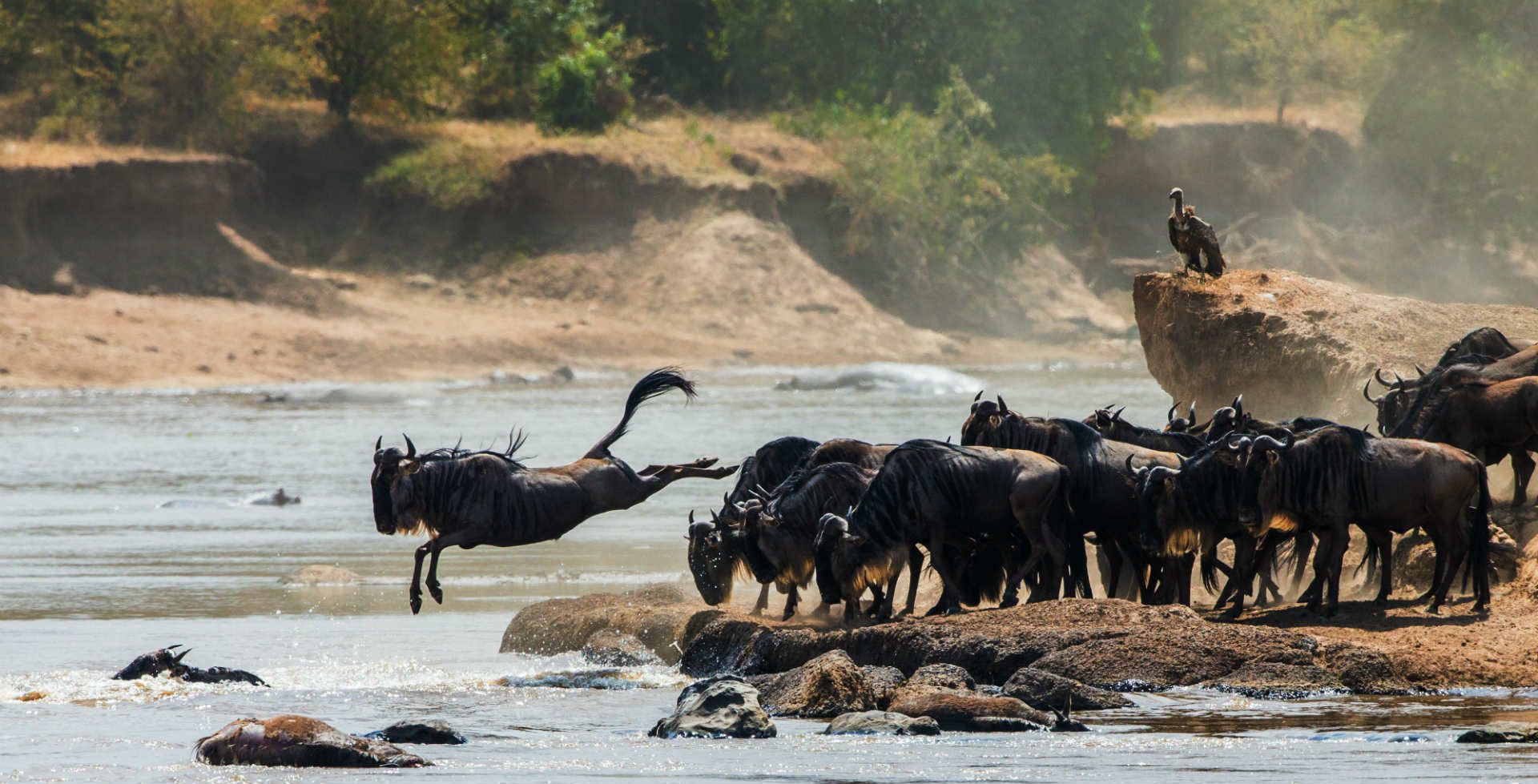2. Tsavo East National Park
Tsavo East is one of Kenya’s oldest and largest national parks, covering over 5,000 square miles (13,000 square kilometers). It’s part of the larger Tsavo ecosystem, which includes Tsavo West, but East is generally flatter, drier, and more open—which makes it easier to spot wildlife. It’s also wilder in the sense that parts of the park remain largely undeveloped, with fewer camps and tracks, especially north of the Galana River.
Elephants are one of the park’s main draws. They’re often stained red from the park’s iron-rich soil, especially after a dust bath. You’ll likely also see giraffes, zebras, buffalo, and plenty of antelope. Big cats like lions and leopards are present but can be harder to spot due to the park’s size. Birdlife is excellent year-round, especially near water—look out for martial eagles, hornbills, and carmine bee-eaters.
How to get to Tsavo East National Park
By road, it’s around 4 to 5 hours from Nairobi or 2 to 3 hours from Mombasa. The main entry points are Voi, Manyani, and Sala gates. There are also small airstrips in the park with daily flights from Nairobi if you’re short on time. Safaris can be arranged through local operators, or you can self-drive—just make sure you have a 4WD if you’re planning to go beyond the main roads.
You can see how to split up your time best while you're here with our sample Kenya itinerary.
When to visit Tsavo East National Park
June to October and January to February are the driest months and best for wildlife viewing, since animals tend to stick close to water. The rainy seasons (March to May and November to December) bring thick greenery, which is great for landscape photography but makes animal sightings more hit or miss. Birdlife picks up during the rains, with migratory species passing through.
Still deciding where to go? See our guide to deciding between Kenya vs. South Africa.






















